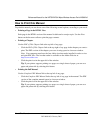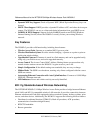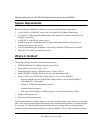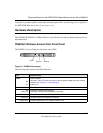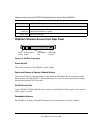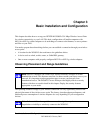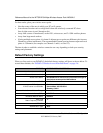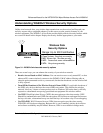
Reference Manual for the NETGEAR 54 Mbps Wireless Access Point WG602v3
2-2 Introduction
202-10060-02, February 2005
• Dynamic WEP key Support. Fixed or Dynamic WEP (Wired Equivalent Privacy) keys can
be used.
• DHCP Client Support. DHCP provides a dynamic IP address to PCs and other devices upon
request. The WG602v3 can act as a client and obtain information from your DHCP server.
• NetBIOS & WINS Support. Support for both NetBIOS broadcast and WINS (Windows
Internet Naming Service) allows the WG602v3 to easily fit into your existing Windows
network.
Key Features
The WG602v3 provides solid functionality, including these features:
• Wireless Access Point. Operates as a standard 802.11g access point.
• Wireless Distribution System. Provides wireless bridging – operates as a point-to-point or
multi-point wireless bridge.
• Upgradeable Firmware. Firmware is stored in a flash memory and can be upgraded easily,
using only your Web browser, and can be upgraded remotely.
• Access Control. The Access Control MAC Address filtering feature can ensure that only
trusted wireless stations can use the WG602v3 to gain access to your LAN.
• Simple Configuration. If the default settings are unsuitable, they are easy to change.
• Hidden Mode. The SSID is not broadcast, assuring only clients configured with the correct
SSID can connect.
• Autosensing Ethernet Connection with
Auto Uplink Interface. Connects to 10/100 Mbps
IEEE 802.3 Ethernet networks.
• LED Indicators. Power and wireless activity are easily identified.
802.11g Standards-based Wireless Networking
The NETGEAR WG602v3 54 Mbps Wireless Access Point provides a bridge between Ethernet
wired LANs and 802.11g compatible wireless LAN networks. It provides connectivity between
Ethernet wired networks and radio-equipped wireless notebook systems, desktop systems, print
servers, and other devices. Additionally, the WG602v3 supports the following wireless features:
• Distributed coordinated function (CSMA/CA, Back off procedure, ACK procedure,
retransmission of unacknowledged frames)
• RTS/CTS handshake
• Beacon generation








